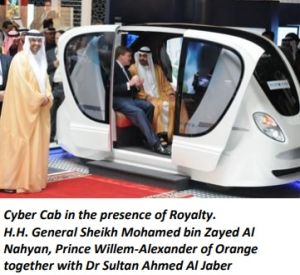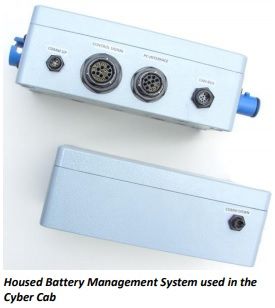The Future of Public Transport
A case study on a novel public transport system in Masdar City – Abu Dhabi.
LiTHIUM BALANCE worked together with Spjikstaal of the Netherlands on a state-of-the-art Personal Rapid Transit system (PRT).
Moving the Masses
Public transport has played and continues to play a starring role in all industrialized societies. The problem with public transport for many is, well, it’s often too public… No space, no privacy and not on demand – it often won’t take you to where you wish to go without changing between different vehicles/routes.
These issues have fuelled the rise and rise of the automobile and other forms of personal transport over the last 150 years. In purely economic terms though, car ownership is often difficult to justify as it is typically the second most expensive item we own after our homes and stands empty and unused most of the time (typical usage <2hrs/day).
Economics of conventional public transport have always required economies of scale to work. High vehicle occupancy is a must, which means that outside of peak periods and away from heavily populated areas, service becomes infrequent in an effort to aggregate the passengers and still achieve economic levels of occupancy.

A Futuristic Solution
The futuristic city of Masdar in Abu Dhabi has decided to deliver a public transport system that overcomes the compromises typically found with conventional public transport systems. The system features a revolutionary personal rapid transit system (PRT). The PRT system consists of fully autonomous robotized six (4+2) person vehicles (Cyber Cabs) running on special guide ways 6 meters below the raised pedestrian walkways in an artificial basement. The guide way infrastructure will also be shared by a Freight Rapid Transport system for delivering supplies to local residents and businesses. Automobiles are banned from the city itself.
The system provides a number of stations where up to 6 vehicles can berth and prospective passengers can summon the Cyber Cab and by use of a smart card and an input panel, select the desired destination. The Cyber Cab appears within typically 3mins and then transports the passenger directly to their destination. The system provides on demand transport 24-7 with low running costs (no drivers, no rail infrastructure, and higher levels of occupancy per vehicle).
The concept has long been discussed and even tried in a few places without widespread acceptance due to its cost. This time around though, the controlling consortium 2getthere have benefited from cutting edge technology in the form of an intelligent navigation system and self powered vehicle. This allows the system to run safely without rails.
Undoubtedly, the control and navigation system are the systems highlights, but all this would be to no avail without a suitable vehicle (Cyber Cab) in which to install it.
The City Cab
The vehicle was developed from scratch by the 2getthere consortium including Spijkstaal of the Netherlands who were responsible for the chassis and drivetrain. The body was styled by the famous coach builders Zagato and is bonded to a tubular high tensile steel frame chassis making for a stiff and robust structure.
The vehicle can run on normal paved roads with embedded magnets as part of the guidance system. Each vehicle has three computers onboard, one for the navigation, another for the braking and steering and one for communication. Additionally there are cameras one looking in and the other looking out.
The drivetrain is electric using onboard Lithium Ion batteries controlled by a Battery Management System from Lithium Balance of Denmark who developed the battery powerpack and charger interface in conjunction with Spijkstaal.
The drive system runs at 48 volts developing up to 10kW with a top speed of about 40km/h and a range of 60-70km. The system voltage was kept low for safety reasons with a maximum charge voltage of 60 volts being used.
The vehicles are typically charged during the off peak hours when only a few need to run and the rest can spend 6 hours receiving a full charge. The battery management system has a special role to play as the high levels of automation have meant that knowing exactly how much energy is left in the battery (SOC) accurately is essential.
To guarantee safe operation, the battery management system is also responsible for controlling the charging process and keeping the batteries in top condition.

Comfort has not been ignored in the PRT vehicles with a smooth ride courtesy of pneumatic tyres and independent coil spring suspension. The vehicles are also air-conditioned. Of the initial delivery of 13, two have been designated VIP units with leather interiors. The goal is to have 3000 PRTs running, eventually over an 85 station network.
This brave and futuristic city will be closely watched all around the world to see the lessons that can be learned, with the unique transport concept coming in for special scrutiny. If successful, we could see many environments adopting this model such as airports, large manufacturing plants, military bases, oil refineries and similar facilities.
We would like to thank Spijkstaal and the 2get there group for their assistance in writing this article.